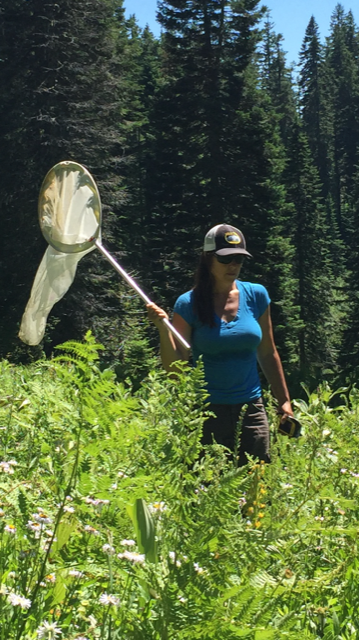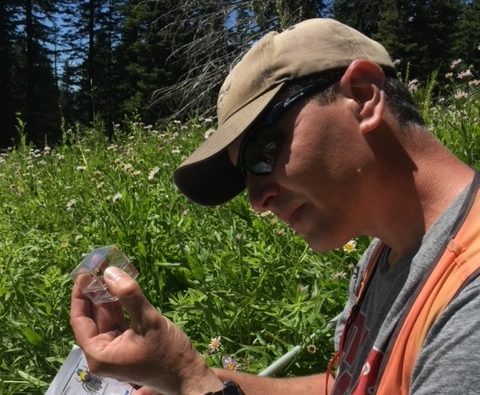Planting for Pollinators in the Willamette National Forest and Beyond

Willamette National Forest District Botanist, Krista Farris, surveys pollinator habitat as a part of her ongoing work to increase pollinator habitat across Lane County.
Pollinators have been declining worldwide both in numbers and range, but in the Willamette National Forest, the Forest Service in Region 6 is trying to slow this trend. Habitat enhancement projects have been underway for a few years, focusing on habitat creation for three particular species of concern, the western bumblebee, the Rufus hummingbird, and the migratory monarch butterfly.
Over the past decade, The Forest Service, has taken a active approach in making our forests a healthier place for pollinators of all sizes.
The work began by conducting pollinator surveys across the region to learn which host plants provide important food sources and habitat for a variety of native insect pollinators. Once sites were located, the Forest Service collected seeds from the most visited host plants. Gathered seeds have been grown out at USFS nurseries and used in Pollinator waystation plantings, now established throughout the Willamette Valley.
Survey work continues annually and the number of waystations continues to grow each season, increasing habitat on a landscape scale for these sensitive species to thrive.
Growing Together
With the help of partners, including local Watershed councils, youth conservation crews, students, volunteers, and other federal agencies, pollinator waystations have been planted across the region. Along river corridors, including at the Finn Rock Landing, waystations provide essential forage and close-by water. Waystations have also been installed at local trailheads, and in school and community gardens. In communities, nature parks now boast important native pollinator plants, and pollinator-specific species are now being incorporated into meadow and stream restoration projects in the Willamette National Forest.
After just a few seasons, ongoing monitoring efforts along the Row River waystations have produced several sightings of monarch butterflies as well as dozens of species of native bees and butterflies.





Students across Lane County have helped to increase pollinator habitat through partnership with the Willamette National Forest.

After the Fire
As a result of recent wildfires across the West, significant portions of the Willamette and adjacent forests have burned. This disturbance offers a unique opportunity for land owners and managers to seed pollinator forbs into open areas caused by the burn. Restoration projects are increasingly including pollinator plants in their planting plans, further increasing habitat availability across the region.
The USFS is also in the process of developing a pollinator-specific seed mix that will be used to sow along decommissioned roads and under powerline corridors throughout the region.
